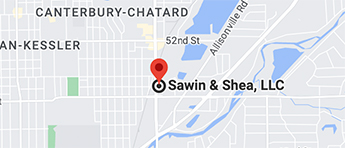An emergency bankruptcy is a bankruptcy filing method that expedites the filing process to stop creditors and bill collectors from seeking debts from borrowers. Individuals can file an emergency bankruptcy, also known as a skeleton bankruptcy, under Chapter 7 and Chapter 13. Additionally, businesses can file an emergency bankruptcy under Chapter 11, but this is rare.
Those filing an emergency bankruptcy receive an automatic stay even before completing certain documents. An automatic stay is an injunction prohibiting creditors from collecting debts.
If you’re in an emergency situation such as wage garnishment, eviction, or pending repossession filing an emergency bankruptcy may be right for you. In this blog, we discuss when to file an emergency bankruptcy, how to file, and details about emergency bankruptcy abuse filing.
When to File an Emergency Bankruptcy
Individuals should file for an emergency bankruptcy in emergency situations, but what is “an emergency situation”? There is no exact definition that we can point to, but you need an adequate reason for why you’re filing for emergency bankruptcy. Some situations in which an individual may want to consider filing for emergency bankruptcy include:
- Wage garnishment
- Creditors levying your bank accounts or property
- An impending home foreclosure sale
- Imminent car repossession
It’s not always clear when it’s the right time to file for emergency bankruptcy. If you receive notification from a creditor or debt collector about them taking action against you, such as repossessing your property or filing a lawsuit, you need to speak with a bankruptcy lawyer immediately to determine your best course of action.
Filing for Emergency Bankruptcy
To start an emergency bankruptcy filing, some basic documents need to be filed with the court. A voluntary bankruptcy petition containing the Debtors contact information and chapter designation is prepared and signed. The Debtor(s) need to complete the required credit counseling session. Additionally, you need to include a creditor matrix, which lists all of your creditors and their addresses. A credit report pull will likely provide the bulk of that information. Finally, you need to submit form B121, which confirms your Social Security number.
If you fail to complete the balance of your schedules in the coming 14 days or so, the court can dismiss your case, and attempting to file again will be more difficult. If you attempt to file again within the same year of your initial filing, you’ll only be granted an automatic stay, the injunction protecting you from creditors, for 30 days unless the court extends it. You’ll need to file a motion to extend your automatic stay beyond 30 days, and you’ll need to explain the reason for the extension in court.
In addition to submitting these necessary forms, you’ll also need to pay some fees and costs.
What is Abuse Filing?
In 2005, the U.S. Congress passed the Bankruptcy Abuse Prevention and Consumer Protection Act (BAPCPA) to protect creditors from abusive bankruptcy filings.
But why would a bankruptcy filing be considered abusive?
If a person files serial bankruptcy cases that are dismissed for non-cooperation with the bankruptcy process, especially if it appears the cases were filed to hinder or delay other legal processes, could result in a time bar from filing future cases.
Other situations in which the court considers a bankruptcy filing abusive include:
- If they fail to appear in court
- If they fail to comply with a court order
- If they don’t make payments to their bankruptcy trustee
Unsure of Whether to File for an Emergency Bankruptcy? Contact a Bankruptcy Lawyer
Determining when to file for Chapter 7 or Chapter 13 bankruptcy is often unclear. Fortunately, you don’t need to undergo this process alone — you can contact a bankruptcy attorney to assist you in navigating the complex world of bankruptcy and overcoming debt. Creditors and debt-collectors often employ aggressive and unethical methods of collecting debts from borrowers, such as harassment, threats, and other forms of abuse. You need legal support to help you with your financial situation.
For experienced bankruptcy attorneys in Indiana, contact Sawin & Shea, LLC. We’ve helped numerous individuals across Indiana with bankruptcy filing and overcoming debts, and we’ll help you deal with creditors attempting to intimidate you. If they engage in illegal debt collection practices, such as harassment, we can represent you to hold them accountable and collect damages. Call our office at 317-759-1483, or you can click here to schedule a FREE consultation with one of our bankruptcy attorneys.



